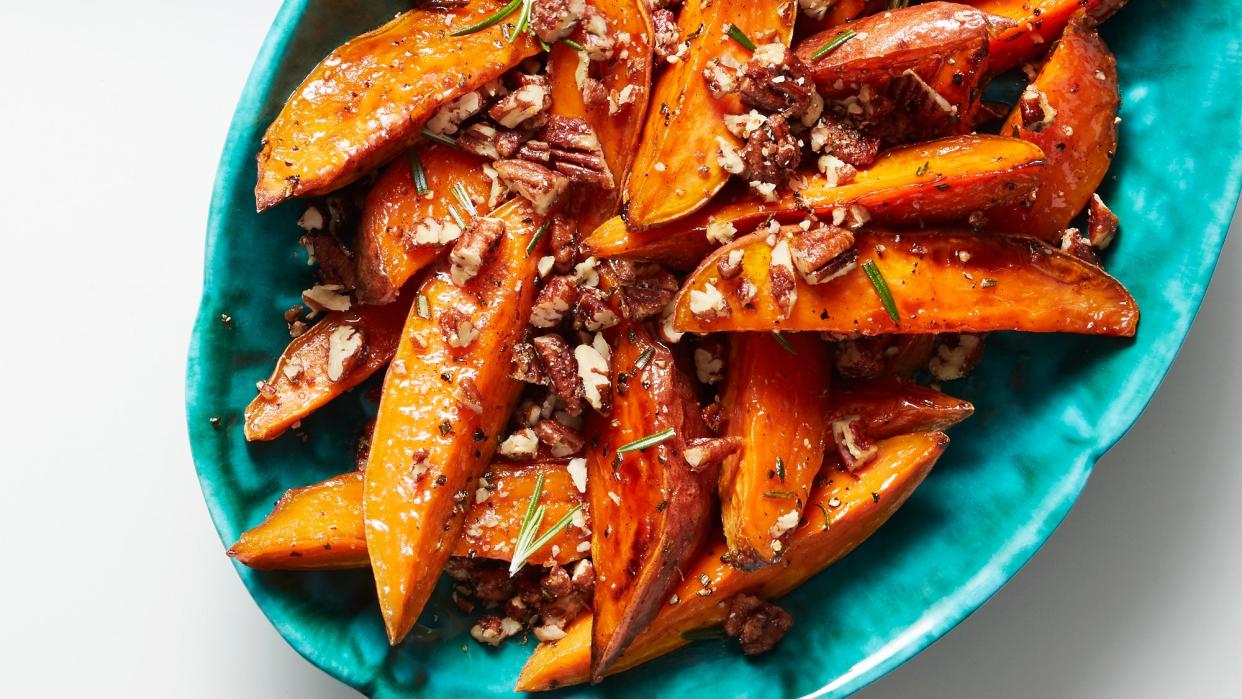Are Sweet Potatoes Really Supreme?

This article originally appeared on Clean Eating
If you've heard that sweet potatoes reign supreme when trying to eat nutritionally-dense foods, think again. Sweet potatoes may get all the attention thanks to their vitamin- and mineral-filled nature, but they aren't necessarily the "best" spud for everyone.
There are a plethora of different colors, shapes, and sizes of potatoes available, and each has a unique purpose in the kitchen. And all can certainly fit in a healthy, balanced diet.
A Brief Potato History Lesson
Fun fact: There are over 4,000 potato varieties across the globe, and that's just from the Solanaceae family! Those familiar spuds you see at the market are actually from three different plant families. Your "classic" potato, is from the nightshade family (Solanaceae), whereas your sweet potato is from the morning glory family (Convolvulaceae) - and yams are a variety of vine species from the Dioscoreaceae family.
Ironically, a classic white potato is actually more similar to peppers, tomatoes, and eggplant than a sweet potato when it comes to "genetics!"
While all potatoes are grown for their various edible tubers (or below-ground plant structures, which are what you see sold at the market), they aren't interchangeable in the kitchen if you want to yield a familiar end result. This is largely due to their various flavor and nutrition profiles.
Nutrition of Potatoes
While white and sweet potatoes are both starchy vegetables that provide about the same grams of protein, fiber, and carbohydrates per serving, their differences shine in the nutrients each variety contains.
For instance, sweet potatoes are packed with beta carotene, which gives their flesh that beautiful orange hue. Traditional white potatoes do not contain any vitamin A. On the flipside, white potatoes are a better source of vitamin C, an important antioxidant that you need to help fight off free radicals and keep your immune health in tip top shape.
Almost all varieties of your traditional potatoes are a better source of potassium than an equivalent serving of banana, which is recognized by the 2020-2025 Dietary Guidelines for Americans as a nutrient of public health concern due to significant under-consumption - less than 3% of us are getting enough. Even sweet potatoes are just a few milligrams shy of equaling the amount of potassium in a banana!
Now, there are a plethora of varieties of potatoes, both white and sweet, popping up at the market and on restaurant menus. So, the best advice is to choose the ones that excite you and consume them in moderation. Research shows that potatoes contain important polyphenols that help in numerous areas of health, exhibiting antioxidant, antibacterial, anticarcinogenic, antidiabetic, and anticancer activities.
So, the next time you question if you can eat any kind of potato, regardless of color, you can feel good about saying yes!
Nutrition Facts Based on 100-gram Serving Size
For exclusive access to all of our fitness, gear, adventure, and travel stories, plus discounts on trips, events, and gear, sign up for Outside+ today.

